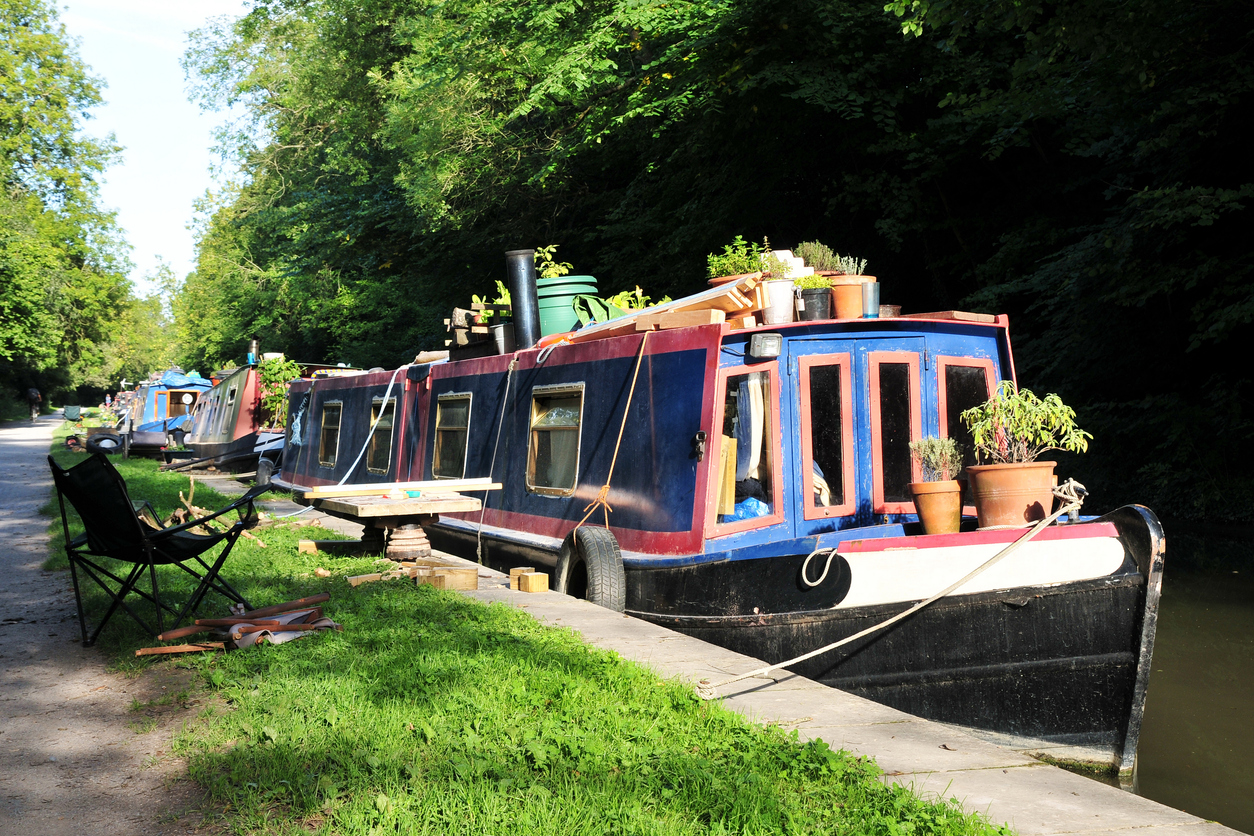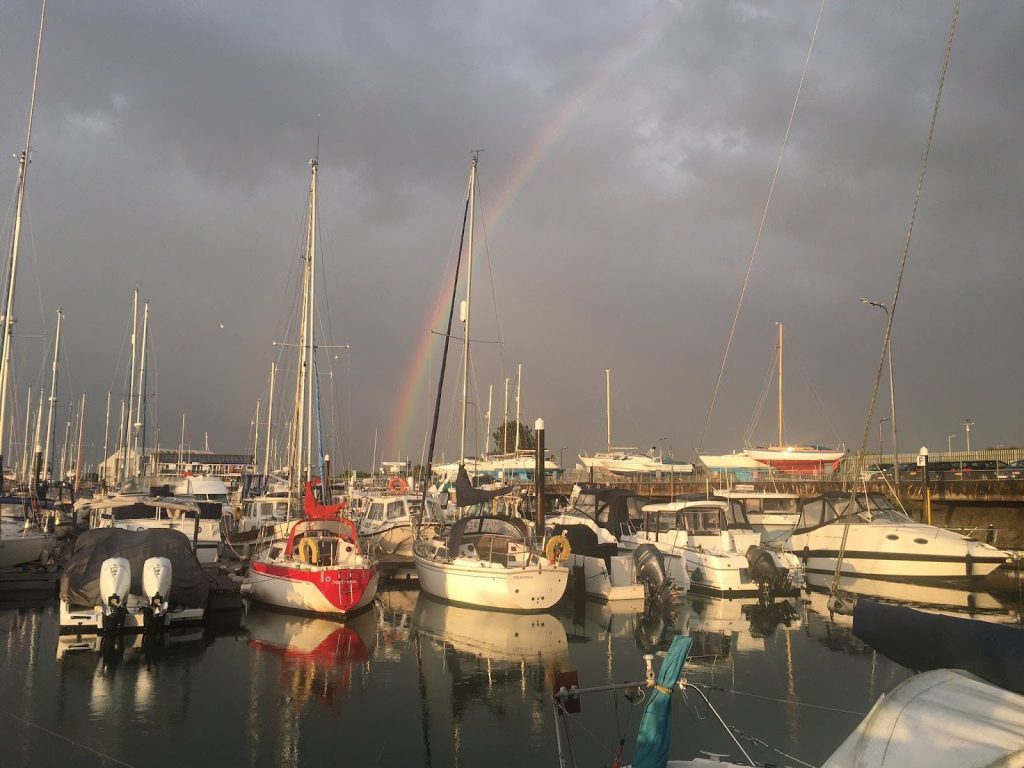Escaping the rat race sounds romantic, but could you live without instant power and a postcode? Tony Jones describes life on a narrowboat.
“It depends on what you consider cramped,” laughs liveaboard convert Tony Jones who runs a copywriting business from his beautifully appointed but distinctly bijou 50ft narrowboat home, the Watchman. He’s currently moored in St Mary’s Marina, Rufford, south of Preston, Lancashire but will be moving on soon. “I have a simple rule - nothing comes in unless we desperately need it.”
Fancy life on the canal?Shop all narrowboats and used boats for sale here.
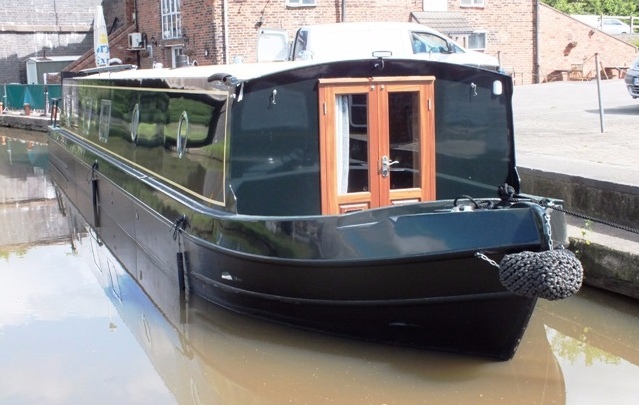 He clambered aboard 12 years ago carrying just a rucksack – no more than you’d take camping. “Now if I buy a new shirt, an old one gets chucked, and if I fancy a new book, I get rid of something from the bookshelf to create the necessary space. I find the lack of clutter incredibly liberating.”
But hows the commute when living on a boat? Non-existant! Jones can work easily from his tiny 6ft X 4ft office with a few essentials - mobile phone, laptop, and wireless 4G internet connection.
What if you need to travel? Because it’s a 50 footer, the boat can navigate the canal network and even the more challenging locks – where longer 60 ft boats might struggle. As mooring fees are generally paid by the foot, you pay less for a shorter narrowboat, but of course this means less space for your belongings. “It’s probably not for everyone."
Read an article by Jo Roche about the pros and cons of living aboard a boat.
Getting yourself super-organised is the key and Jones has risen to the challenge admirably, saying he’d never go back to bricks and mortar now that he’s cracked boat life. He’s written a book spelling out the practicalities - The Liveaboard Guide – a must read for would-be narrowboat dwellers. It delves into the cost of residential mooring, power usage and energy consumption, how to stay warm - the choice of coal, electric, gas or wood heating - boat loos and issues of etiquette to consider when you join the canal community.
He clambered aboard 12 years ago carrying just a rucksack – no more than you’d take camping. “Now if I buy a new shirt, an old one gets chucked, and if I fancy a new book, I get rid of something from the bookshelf to create the necessary space. I find the lack of clutter incredibly liberating.”
But hows the commute when living on a boat? Non-existant! Jones can work easily from his tiny 6ft X 4ft office with a few essentials - mobile phone, laptop, and wireless 4G internet connection.
What if you need to travel? Because it’s a 50 footer, the boat can navigate the canal network and even the more challenging locks – where longer 60 ft boats might struggle. As mooring fees are generally paid by the foot, you pay less for a shorter narrowboat, but of course this means less space for your belongings. “It’s probably not for everyone."
Read an article by Jo Roche about the pros and cons of living aboard a boat.
Getting yourself super-organised is the key and Jones has risen to the challenge admirably, saying he’d never go back to bricks and mortar now that he’s cracked boat life. He’s written a book spelling out the practicalities - The Liveaboard Guide – a must read for would-be narrowboat dwellers. It delves into the cost of residential mooring, power usage and energy consumption, how to stay warm - the choice of coal, electric, gas or wood heating - boat loos and issues of etiquette to consider when you join the canal community.
 Jones paid £30,000 for his 50ft narrowboat in 2005 having returned from working abroad and felt disinclined to take on a big mortgage and all the trappings of mainstream living. “I’ve always had a slightly itinerant nature and the chance to move onto a new location every 6 months really appealed to me.” He and his girlfriend Vickie and their dog Puck are slowly progressing around the canal network, mooring for a few months before planning their next adventure. “It’s easy going out in the regions, but I would say that London is almost a no-go area for boaters now. Trying to moor is a nightmare with boats two or three abreast in the popular inner city locations like Islington, Hackney and Little Venice.”
Read an article by Alison Clements to see if you could cope with living on a narrowboat.
Exploring the Leeds-Liverpool Canal has kept Tony and Vickie occupied recently and their next trip will be The Millennium Ribble Link - a new navigation which links the once-isolated Lancaster Canal in Lancashire, to the River Ribble.
Jones paid £30,000 for his 50ft narrowboat in 2005 having returned from working abroad and felt disinclined to take on a big mortgage and all the trappings of mainstream living. “I’ve always had a slightly itinerant nature and the chance to move onto a new location every 6 months really appealed to me.” He and his girlfriend Vickie and their dog Puck are slowly progressing around the canal network, mooring for a few months before planning their next adventure. “It’s easy going out in the regions, but I would say that London is almost a no-go area for boaters now. Trying to moor is a nightmare with boats two or three abreast in the popular inner city locations like Islington, Hackney and Little Venice.”
Read an article by Alison Clements to see if you could cope with living on a narrowboat.
Exploring the Leeds-Liverpool Canal has kept Tony and Vickie occupied recently and their next trip will be The Millennium Ribble Link - a new navigation which links the once-isolated Lancaster Canal in Lancashire, to the River Ribble.
 The highs tend to come in the summer when you can recline on your deck in the dappled sunlight sipping Martinis, enjoying the splendidly tranquil surroundings. “The lows kick in during the winter when you’re desperate for a hot shower but your gas bottle needs changing, the water tank is empty and the toilet is full,” says Jones. “Really, this is glorified camping and everyday things house dwellers take for granted – pushing a button to flush the loo, and flicking on the central heating – just aren’t available.”
Heating, water and toilet waste must be very carefully planned. “You have to consider where your energy is coming from and where your waste is going to go. That might mean lugging 25 kg of your own effluent down a towpath to the nearest disposal point or paying £15 every three weeks to have your toilet pumped out. If you’re on a short boat and have clever fittings like a seating unit that converts into a bed – that’s great – as long as you don’t mind doing that every single night for years on end.”
The highs tend to come in the summer when you can recline on your deck in the dappled sunlight sipping Martinis, enjoying the splendidly tranquil surroundings. “The lows kick in during the winter when you’re desperate for a hot shower but your gas bottle needs changing, the water tank is empty and the toilet is full,” says Jones. “Really, this is glorified camping and everyday things house dwellers take for granted – pushing a button to flush the loo, and flicking on the central heating – just aren’t available.”
Heating, water and toilet waste must be very carefully planned. “You have to consider where your energy is coming from and where your waste is going to go. That might mean lugging 25 kg of your own effluent down a towpath to the nearest disposal point or paying £15 every three weeks to have your toilet pumped out. If you’re on a short boat and have clever fittings like a seating unit that converts into a bed – that’s great – as long as you don’t mind doing that every single night for years on end.”
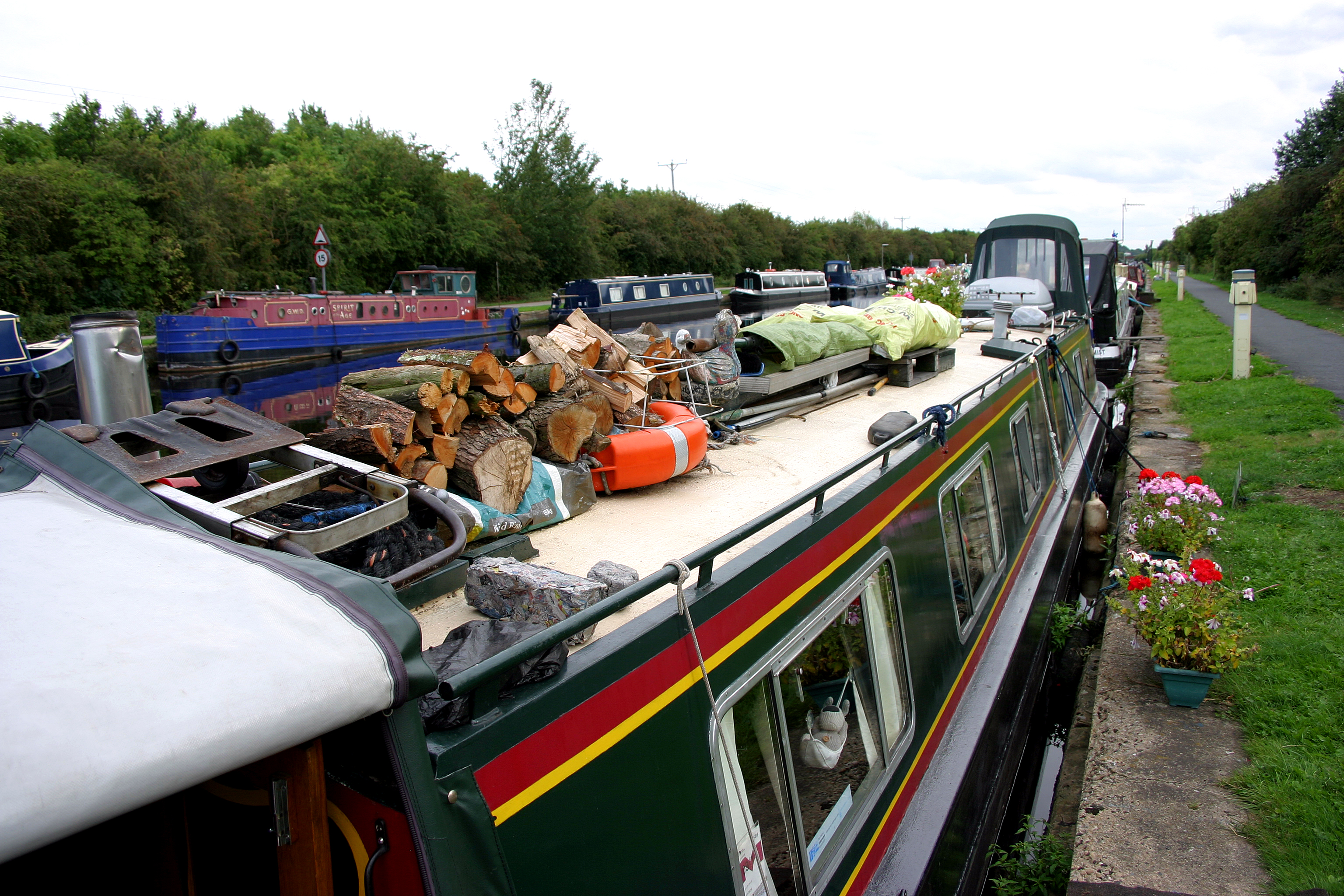 A major bugbear is not having a postcode, which can be frustrating for a host of reasons. “Living on a narrowboat doesn’t fit the profile of contemporary life, so you have to learn to cope with that. Finance companies, GPs, grocery deliveries, TV services – they just don’t like you if you haven’t got a regular postal address.” As many marinas aren’t strictly geared up for residential mooring you’re not likely to get one either. That said, some marinas can help you arrange for deliveries and even give you a postal address.
Despite all these headaches, Jones and his partner are smitten. “This lifestyle is wonderfully stimulating. You see fascinating urban scenes, beautiful peaceful rural stretches of canal, and you’re living alongside British wildlife in all its glory as the seasons change. If you’re happy to put in the graft, the rewards are amazing.”
A major bugbear is not having a postcode, which can be frustrating for a host of reasons. “Living on a narrowboat doesn’t fit the profile of contemporary life, so you have to learn to cope with that. Finance companies, GPs, grocery deliveries, TV services – they just don’t like you if you haven’t got a regular postal address.” As many marinas aren’t strictly geared up for residential mooring you’re not likely to get one either. That said, some marinas can help you arrange for deliveries and even give you a postal address.
Despite all these headaches, Jones and his partner are smitten. “This lifestyle is wonderfully stimulating. You see fascinating urban scenes, beautiful peaceful rural stretches of canal, and you’re living alongside British wildlife in all its glory as the seasons change. If you’re happy to put in the graft, the rewards are amazing.”
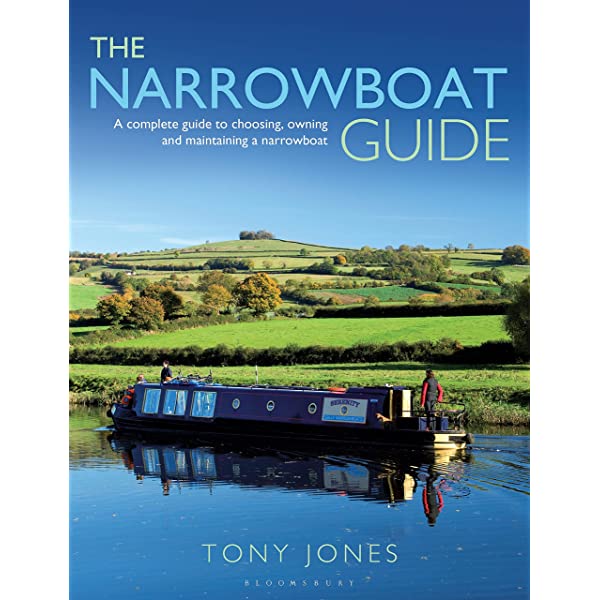 Further reading:
Could you cope with living on a narrowboat?
The pros and cons of living aboard a narrowboats.
Buying a cheap GRP Canal River Boat.
Further reading:
Could you cope with living on a narrowboat?
The pros and cons of living aboard a narrowboats.
Buying a cheap GRP Canal River Boat.

 He clambered aboard 12 years ago carrying just a rucksack – no more than you’d take camping. “Now if I buy a new shirt, an old one gets chucked, and if I fancy a new book, I get rid of something from the bookshelf to create the necessary space. I find the lack of clutter incredibly liberating.”
But hows the commute when living on a boat? Non-existant! Jones can work easily from his tiny 6ft X 4ft office with a few essentials - mobile phone, laptop, and wireless 4G internet connection.
What if you need to travel? Because it’s a 50 footer, the boat can navigate the canal network and even the more challenging locks – where longer 60 ft boats might struggle. As mooring fees are generally paid by the foot, you pay less for a shorter narrowboat, but of course this means less space for your belongings. “It’s probably not for everyone."
Read an article by Jo Roche about the pros and cons of living aboard a boat.
Getting yourself super-organised is the key and Jones has risen to the challenge admirably, saying he’d never go back to bricks and mortar now that he’s cracked boat life. He’s written a book spelling out the practicalities - The Liveaboard Guide – a must read for would-be narrowboat dwellers. It delves into the cost of residential mooring, power usage and energy consumption, how to stay warm - the choice of coal, electric, gas or wood heating - boat loos and issues of etiquette to consider when you join the canal community.
He clambered aboard 12 years ago carrying just a rucksack – no more than you’d take camping. “Now if I buy a new shirt, an old one gets chucked, and if I fancy a new book, I get rid of something from the bookshelf to create the necessary space. I find the lack of clutter incredibly liberating.”
But hows the commute when living on a boat? Non-existant! Jones can work easily from his tiny 6ft X 4ft office with a few essentials - mobile phone, laptop, and wireless 4G internet connection.
What if you need to travel? Because it’s a 50 footer, the boat can navigate the canal network and even the more challenging locks – where longer 60 ft boats might struggle. As mooring fees are generally paid by the foot, you pay less for a shorter narrowboat, but of course this means less space for your belongings. “It’s probably not for everyone."
Read an article by Jo Roche about the pros and cons of living aboard a boat.
Getting yourself super-organised is the key and Jones has risen to the challenge admirably, saying he’d never go back to bricks and mortar now that he’s cracked boat life. He’s written a book spelling out the practicalities - The Liveaboard Guide – a must read for would-be narrowboat dwellers. It delves into the cost of residential mooring, power usage and energy consumption, how to stay warm - the choice of coal, electric, gas or wood heating - boat loos and issues of etiquette to consider when you join the canal community.
 Jones paid £30,000 for his 50ft narrowboat in 2005 having returned from working abroad and felt disinclined to take on a big mortgage and all the trappings of mainstream living. “I’ve always had a slightly itinerant nature and the chance to move onto a new location every 6 months really appealed to me.” He and his girlfriend Vickie and their dog Puck are slowly progressing around the canal network, mooring for a few months before planning their next adventure. “It’s easy going out in the regions, but I would say that London is almost a no-go area for boaters now. Trying to moor is a nightmare with boats two or three abreast in the popular inner city locations like Islington, Hackney and Little Venice.”
Read an article by Alison Clements to see if you could cope with living on a narrowboat.
Exploring the Leeds-Liverpool Canal has kept Tony and Vickie occupied recently and their next trip will be The Millennium Ribble Link - a new navigation which links the once-isolated Lancaster Canal in Lancashire, to the River Ribble.
Jones paid £30,000 for his 50ft narrowboat in 2005 having returned from working abroad and felt disinclined to take on a big mortgage and all the trappings of mainstream living. “I’ve always had a slightly itinerant nature and the chance to move onto a new location every 6 months really appealed to me.” He and his girlfriend Vickie and their dog Puck are slowly progressing around the canal network, mooring for a few months before planning their next adventure. “It’s easy going out in the regions, but I would say that London is almost a no-go area for boaters now. Trying to moor is a nightmare with boats two or three abreast in the popular inner city locations like Islington, Hackney and Little Venice.”
Read an article by Alison Clements to see if you could cope with living on a narrowboat.
Exploring the Leeds-Liverpool Canal has kept Tony and Vickie occupied recently and their next trip will be The Millennium Ribble Link - a new navigation which links the once-isolated Lancaster Canal in Lancashire, to the River Ribble.
 The highs tend to come in the summer when you can recline on your deck in the dappled sunlight sipping Martinis, enjoying the splendidly tranquil surroundings. “The lows kick in during the winter when you’re desperate for a hot shower but your gas bottle needs changing, the water tank is empty and the toilet is full,” says Jones. “Really, this is glorified camping and everyday things house dwellers take for granted – pushing a button to flush the loo, and flicking on the central heating – just aren’t available.”
Heating, water and toilet waste must be very carefully planned. “You have to consider where your energy is coming from and where your waste is going to go. That might mean lugging 25 kg of your own effluent down a towpath to the nearest disposal point or paying £15 every three weeks to have your toilet pumped out. If you’re on a short boat and have clever fittings like a seating unit that converts into a bed – that’s great – as long as you don’t mind doing that every single night for years on end.”
The highs tend to come in the summer when you can recline on your deck in the dappled sunlight sipping Martinis, enjoying the splendidly tranquil surroundings. “The lows kick in during the winter when you’re desperate for a hot shower but your gas bottle needs changing, the water tank is empty and the toilet is full,” says Jones. “Really, this is glorified camping and everyday things house dwellers take for granted – pushing a button to flush the loo, and flicking on the central heating – just aren’t available.”
Heating, water and toilet waste must be very carefully planned. “You have to consider where your energy is coming from and where your waste is going to go. That might mean lugging 25 kg of your own effluent down a towpath to the nearest disposal point or paying £15 every three weeks to have your toilet pumped out. If you’re on a short boat and have clever fittings like a seating unit that converts into a bed – that’s great – as long as you don’t mind doing that every single night for years on end.”
 A major bugbear is not having a postcode, which can be frustrating for a host of reasons. “Living on a narrowboat doesn’t fit the profile of contemporary life, so you have to learn to cope with that. Finance companies, GPs, grocery deliveries, TV services – they just don’t like you if you haven’t got a regular postal address.” As many marinas aren’t strictly geared up for residential mooring you’re not likely to get one either. That said, some marinas can help you arrange for deliveries and even give you a postal address.
Despite all these headaches, Jones and his partner are smitten. “This lifestyle is wonderfully stimulating. You see fascinating urban scenes, beautiful peaceful rural stretches of canal, and you’re living alongside British wildlife in all its glory as the seasons change. If you’re happy to put in the graft, the rewards are amazing.”
A major bugbear is not having a postcode, which can be frustrating for a host of reasons. “Living on a narrowboat doesn’t fit the profile of contemporary life, so you have to learn to cope with that. Finance companies, GPs, grocery deliveries, TV services – they just don’t like you if you haven’t got a regular postal address.” As many marinas aren’t strictly geared up for residential mooring you’re not likely to get one either. That said, some marinas can help you arrange for deliveries and even give you a postal address.
Despite all these headaches, Jones and his partner are smitten. “This lifestyle is wonderfully stimulating. You see fascinating urban scenes, beautiful peaceful rural stretches of canal, and you’re living alongside British wildlife in all its glory as the seasons change. If you’re happy to put in the graft, the rewards are amazing.”
How much does it cost to live on a narrowboat?
- Original cost of boat: This came in at just over £30K (in 2004). Once the necessary repairs had been done, I sail away. Shop narrow boats here.
- Annual mooring fees: These are usually around £1,800 here in the north. Often this is reduced if I end up cruising for the summer or moving to a new location. For example, this last tax year I spent only £800, as I've been out and about on the waterways. Learn more about moorings on the Canal and River trust website.
- Boat licence: 50 ft boat = £775.93
- Fuel Bills:
- Gas bottles (For hot water and fridge): £330pa
- Coal and Kindling (For Solid fuel stove heating): £250pa
- Electricity (Lighting, laptop/phone, music and occasional appliances): £245pa
- Pump outs (toilet): £300pa
- Insurance: £130pa
- Boat Maintenance: Highly variable - last year approx £1K, but in 2015 it was over £7K as I got a new paint job done
 Further reading:
Could you cope with living on a narrowboat?
The pros and cons of living aboard a narrowboats.
Buying a cheap GRP Canal River Boat.
Further reading:
Could you cope with living on a narrowboat?
The pros and cons of living aboard a narrowboats.
Buying a cheap GRP Canal River Boat.

